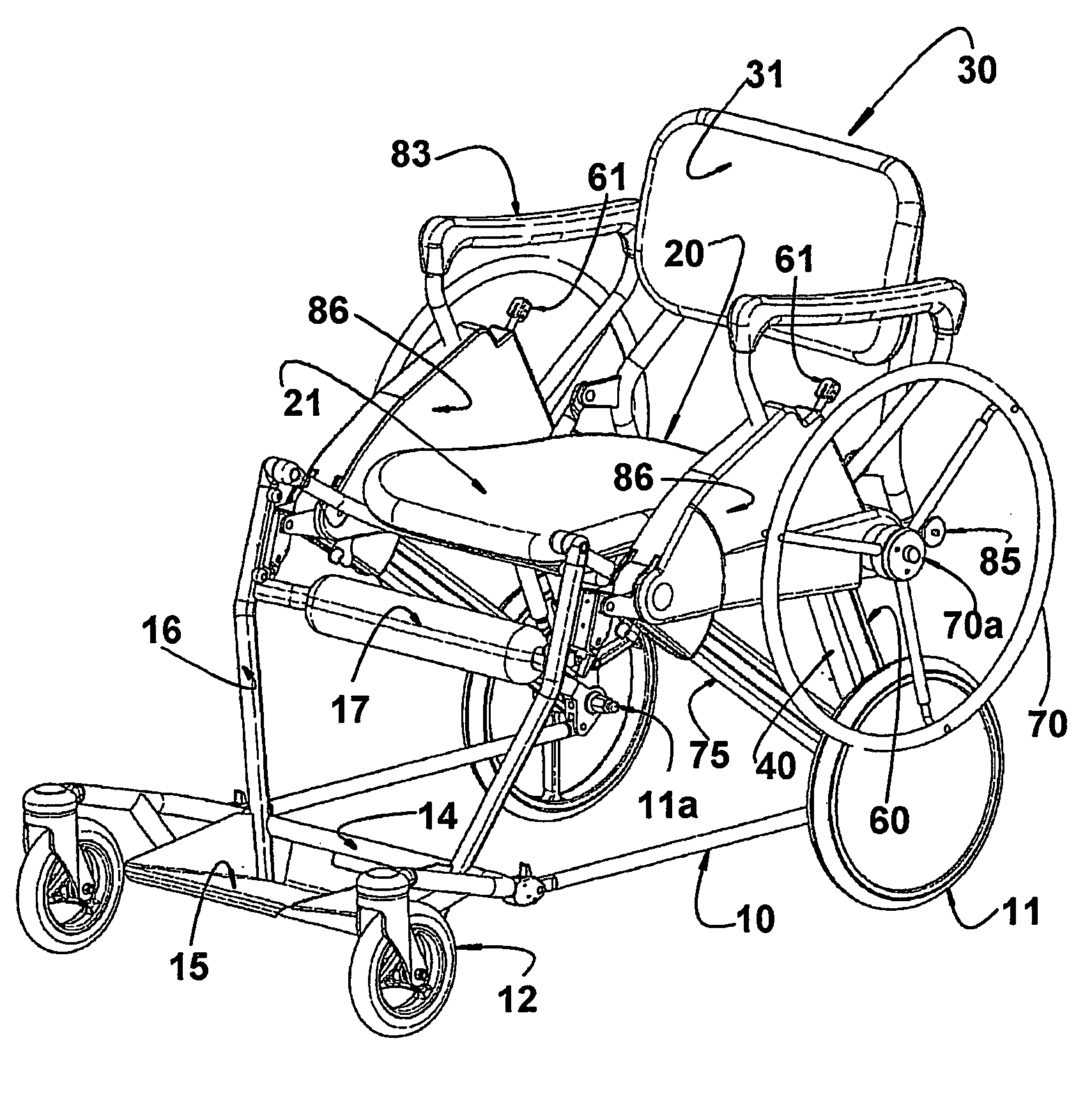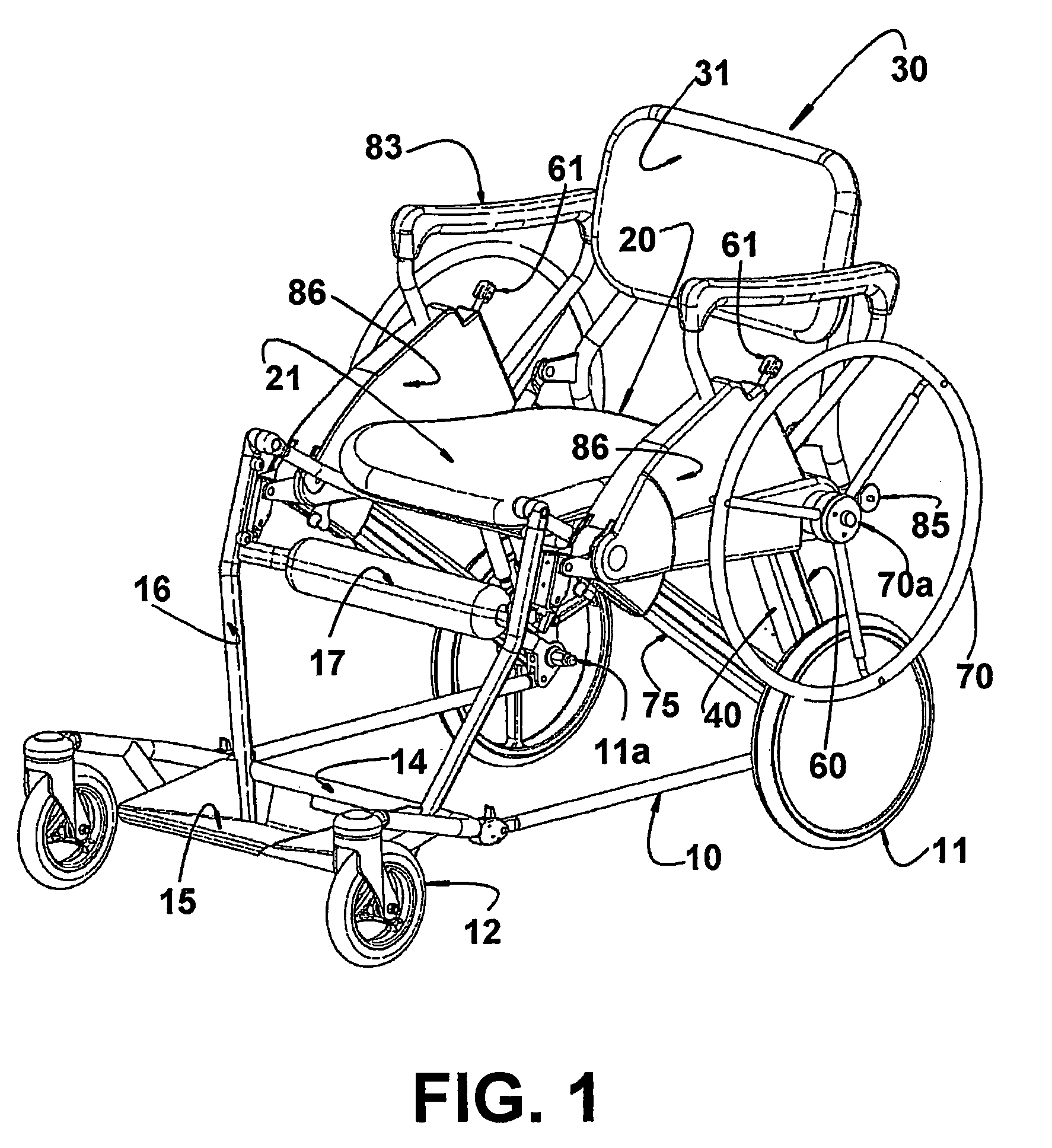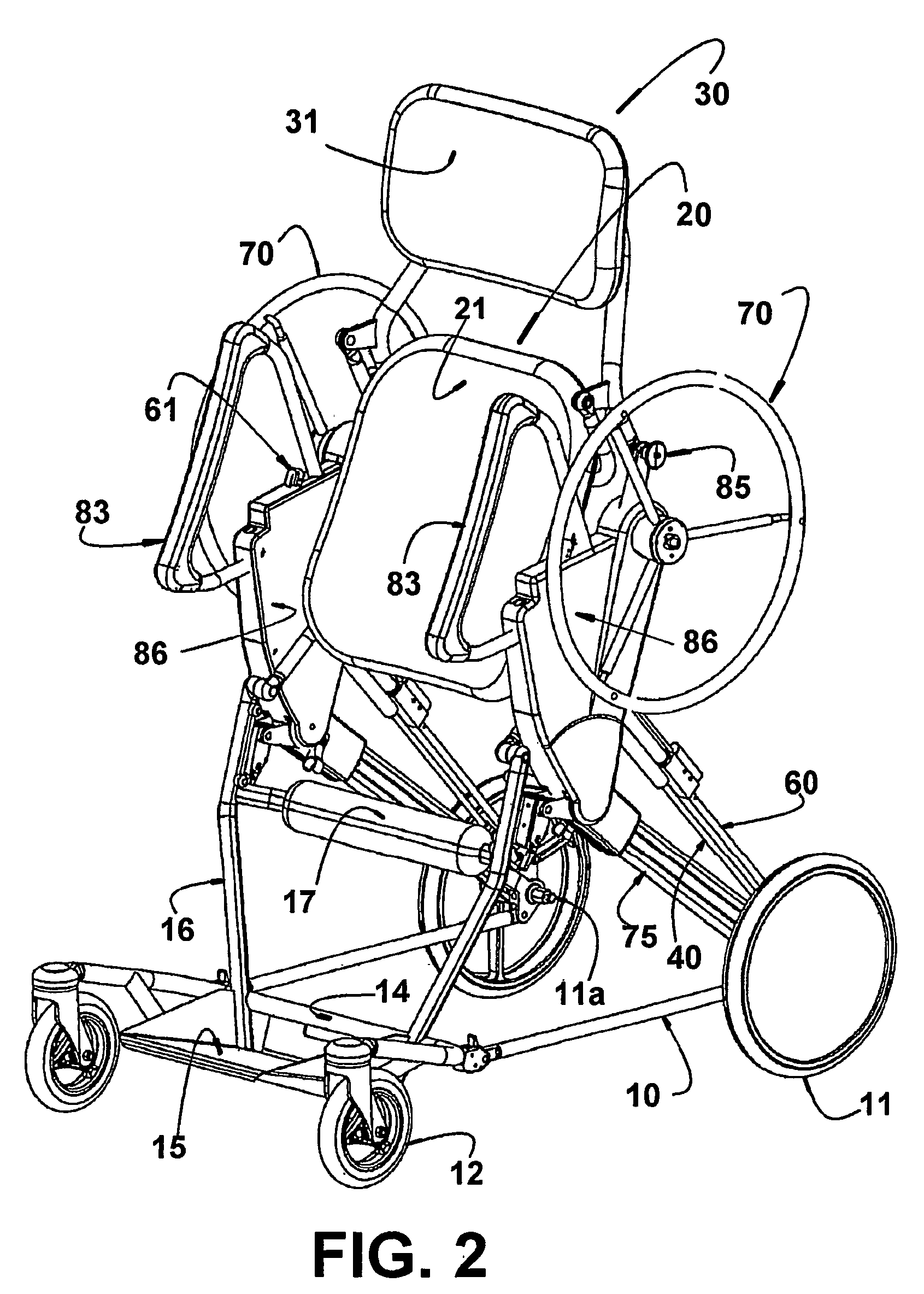Locomotion device for physically disabled persons
a technology for disabled people and locomotion devices, which is applied in the field of locomotion devices for physically disabled people, can solve the problems of physical handicapped people finding difficulty in certain everyday activities, user still finding difficulty in a number of activities, and usually associated with the user's unalterable position, so as to improve the functions of the digestive and circulatory system, reduce physical restrictions, and strengthen the bones of the legs
- Summary
- Abstract
- Description
- Claims
- Application Information
AI Technical Summary
Benefits of technology
Problems solved by technology
Method used
Image
Examples
Embodiment Construction
[0027]According to the illustrations, the present invention refers to a locomotion device for physically desabled persons, having a chassis 10 mounted on a pair of rear wheels 11, and a pair of front swiveling wheels 12, said chassis 10 carrying a seat frame 20 and a backrest frame 30, said frames sustaining, respectively, a seat cushion 21 and a backrest cushion 31, for example in a substantially rectangular shape and made of a foamed material placed on a support of plastic material, the respective seat frame 20 and backrest frame 30 being made of a tubular metallic material, for example in light metal alloys, such as titanium or aluminum, in order to allow obtaining a light device with its weight within the acceptable limits to permit disassemble and accommodation of said device, for example in an automobile, by the user himself. However, as a function of determined specific requirements, some parts can be manufactured in stainless steel, bronze or brass, as well as synthetic mate...
PUM
 Login to View More
Login to View More Abstract
Description
Claims
Application Information
 Login to View More
Login to View More - R&D
- Intellectual Property
- Life Sciences
- Materials
- Tech Scout
- Unparalleled Data Quality
- Higher Quality Content
- 60% Fewer Hallucinations
Browse by: Latest US Patents, China's latest patents, Technical Efficacy Thesaurus, Application Domain, Technology Topic, Popular Technical Reports.
© 2025 PatSnap. All rights reserved.Legal|Privacy policy|Modern Slavery Act Transparency Statement|Sitemap|About US| Contact US: help@patsnap.com



